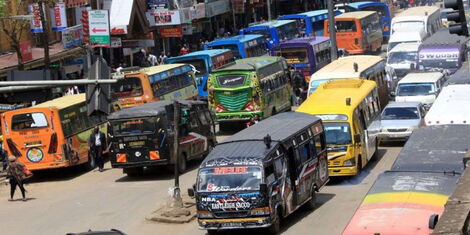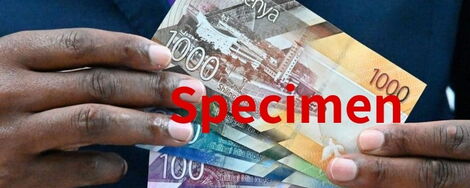Matatus are a common way of travelling within Nairobi as about 70 percent of the capital’s 1.3 million passengers use a matatu at some point every month for their commute.
Within the Billion shilling industry, matatu crews have daily targets to meet for their owners, SACCOs, traffic bribes and for individual upkeep as well.
The sector is plagued with organised criminal gangs, rogue traffic police officers, county askaris and unprofessional touts.

It is reported that each of these groups collect at least Ksh200 from the over 120,000 matatus operating in the city daily
In order to reach the targets and have money for these extra expenses, the costs are passed on to passengers through the fares which can be modified.
Here are some of the tricks used by touts to swindle Nairobi commuters:
1. Kamageras
Any commuter can relate to being told a certain amount of fare for a journey by the person boarding passengers into the vehicle only to walk in and find the fare is different.
The young men known as Kamageras, announce fares and even negotiate with the passengers quoting lower prices to get people on board.
At times, the prices are not the same ones a conductor will charge for the journey as they disown the kamageras prices as false.
To avoid confrontation, a passenger will be forced to pay the amount.
2. Speaking fast when announcing fares
At the bus stages, the touts may shout out prices with destinations in quick succession which may mislead passengers to believe a price for a certain destination.
When calling passengers to board, the touts may speak fast with urgency making it unclear the fare for the various stops.
The touts will then lay the blame on the passengers for misunderstanding the fares for the destinations.
3. Purposefully not returning change
Nairobi commuters know that boarding a matatu with loose money will play a huge role in give you peace of mind during the ride.
This is because, most of the time, getting change back especially for large amounts may be a tall order.
If a passenger does not remind the touts, they may not bother to return or search for the fare.

FILE
3. Tout alighting before giving change
In other incidences, the touts may alight the matatu before reaching the destination. A commuter who may have been waiting to get their fare when they get to the destination will have no way to get their money back.
A resident who had boarded a matatu to Town along Jogoo Road explained to Kenyans.co.ke how he lost his money to a tout.
“There was a tout who made away with my change of Ksh120 when he alighted at a bus station before we got into town. I thought he had gone to look for change, but I never saw him when we got to the CBD,” the commuter explained.
Most of the time, there are no official ways to follow up if a matatu makes away with your change as they do not have official records or receipts.
4. Drivers cabin seats priced higher than the other seats
In some matatus plying various routes in Nairobi, the seats at the front in the drivers cabin are priced higher than the usual seats.
The seats have an exclusive tag which are viewed as more comfortable than the rest of the seats. This is common in matatus plying the Kayole route.
5. Hiked fares due to Covid-19 pandemic
With the Covid-19 pandemic, matatus hiked fares as they were forced by the state to implement social distancing in their vehicle which reduced passengers allowed per vehicle.
Health CS during an address in March 2020, appealed to the matatu sector not to increase their fares.
“This is immoral for the matatu sector to increase fares. We kindly request for them to stop. Several public transport operators have increased fare and I appeal to them not to increase fares by so doing it will be counterproductive in fighting the virus,” Kagwe stated.
In some routes, the fares were raised by almost half the regular price for the matatus to recoup their profits.

SOURCE: https://www.kenyans.co.ke/news/58111-tactics-nairobi-touts-use-swindle-passengers






![Top 20 Used Cars to Avoid Buying in Kenya – [PHOTOS]](https://kenyacarbazaar.com/blog/wp-content/uploads/2013/11/top-used-unreliable-cars-to-avoid2-356x220.jpg)


![Here are some of the best tuned cars in kenya by state of the art garages [PHOTOS]](https://kenyacarbazaar.com/blog/wp-content/uploads/2013/11/29402_10151301757042065_340470732_n-e1384498044289.jpg)



![Top 20 Used Cars to Avoid Buying in Kenya – [PHOTOS]](https://kenyacarbazaar.com/blog/wp-content/uploads/2013/11/top-used-unreliable-cars-to-avoid2-100x70.jpg)






